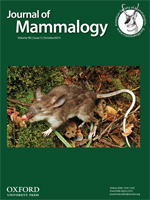Domestic cats (Felis catus) have caused the extinction of many island species and are thought to kill many billions of birds and mammals in the continental United States each year. However, the spatial distribution and abundance of cats and their risk to our protected areas remains unknown. We worked with citizen scientists to survey the mammals at 2,117 sites in 32 protected areas and one urban area across 6 states in the eastern United States using camera traps. We found that most protected areas had high levels of coyote (Canis latrans) activity, but few or no domestic cats. The relative abundance of domestic cats in residential yards, where coyotes were rare, was 300 times higher than in the protected areas. Our spatial models of cat distribution show the amount of coyote activity and housing density are the best predictors of cat activity, and that coyotes and cats overlap the most in small urban forests. Coyotes were nocturnal at all sites, while cats were nocturnal in protected areas, but significantly more diurnal in urban sites. We suggest that the ecological impact of free-ranging cats in the region is concentrated in urban areas or other sites, such as islands, with few coyotes. Our study also shows the value of citizen science for conducting broadscale mammal surveys using photo-vouchered locations that ensure high data quality.
How to translate text using browser tools
29 September 2015
Cats are Rare Where Coyotes Roam
Roland Kays,
Robert Costello,
Tavis Forrester,
Megan C. Baker,
Arielle W. Parsons,
Elizabeth L. Kalies,
George Hess,
Joshua J. Millspaugh,
William McShea
ACCESS THE FULL ARTICLE

Journal of Mammalogy
Vol. 96 • No. 5
October 2015
Vol. 96 • No. 5
October 2015
Camera trap
Canis latrans
citizen science
Felis catus
invasive species
protected areas




